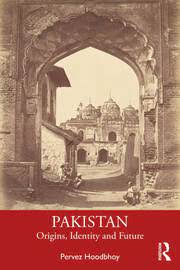 Over the years, several Pakistani leaders have attempted to steer the country toward a “true” Islamic state, with mixed results. Pervez Hoodbhoy, writing in Pakistan: Origin, Identity and Future (2023), has highlighted the traits of the men who tried to align the state with their version of Islam, setting the stage for the confusion that persists over what constitutes the ideology of Pakistan.
Over the years, several Pakistani leaders have attempted to steer the country toward a “true” Islamic state, with mixed results. Pervez Hoodbhoy, writing in Pakistan: Origin, Identity and Future (2023), has highlighted the traits of the men who tried to align the state with their version of Islam, setting the stage for the confusion that persists over what constitutes the ideology of Pakistan.
The first such leader was also the country’s founder. Muhammad Ali Jinnah, writes Hoodbhoy, flip-flopped between Islamic and secular notions of governance in the years before Partition. In the 1940s, notes the author, Quaid-e-Azam was quite casual in referring to the new state-to-be, alternating between it being a Muslim-majority state or an Islamic state—the former being considered largely secular with a predominately Muslim population and the latter a state built on the principles enshrined in Islam.
This ambivalence, per Hoodbhoy, never really went away. Addressing a gathering at the Karachi Bar Association on Jan. 5, 1948, Jinnah said: “Why this feeling of nervousness that the future constitution of Pakistan is going to be in conflict with Shariat Laws? … Islamic principles today are as applicable to life today as they were 1,300 years ago.”
Next up was Pakistan Peoples Party (PPP) founder Zulfikar Ali Bhutto, whose initial populism derived from his appeals of socialism and a just social order with a stated aim of eliminating feudalism and capitalism. However, as reality set in, he backtracked on his promises and began to lean on Islam. In place of his promised socialism, writes Hoodbhoy, came “Islamic socialism.”
The process continued throughout Bhutto’s tenure, with the end of his regime marked by concession after concession to the nine political parties who had banded together to demand a return to the Nizam-e-Mustafa, the political system of Islam’s Prophet (Peace Be Upon Him). It was during this retreat that Bhutto’s government banned alcohol, declared Friday as a weekly holiday rather than Sunday, and enacted legislation declaring the Ahmadiya community non-Muslims.
Gen. Muhammad Ziaul Haq, the man who ousted Bhutto through a military coup, was by far the most explicit and determined, pinning the legitimacy of his government (1977-1988) on redefining Pakistan as an Islamic state run under Islamic law. Supported by the Council of Islamic Ideology, Zia banned political parties as well as labor and student unions, instituted Islamic punishments, and took important steps towards enforcing Sharia. His decade in power marked the most visible use of Islamic law in Pakistani history.
Zia’s death heralded a return to democratic rule in Pakistan, with the next decade coming across as a period of readjustment for political parties vying for power. It was nearly 10 years later, while Pakistan Muslim League (Nawaz) leader Nawaz Sharif was serving his second term as prime minister, that Islam was once again invoked to move a bill in Parliament for the imposition of sharia law. The country was at one of the many crossroads that litter its history, suffering from sanctions imposed over its testing of nuclear weapons in May 1998. An embattled Sharif was perceived to be clutching at straws in a desperate bid to save himself, but most observers agree that the proposed bill would likely have passed, as the PMLN held the absolute majority at the time. However, it was deferred for technical reasons and Sharif was himself ousted by the coup of Gen. Pervez Musharraf on Oct. 12, 1999. Upon his return to Pakistan after Musharraf stepped down, Sharif was elected prime minister for a third time in 2013, with no apparent desire to revisit the issue of sharia. Instead, his comeback saw him espousing liberal and secular ideals with great vigor—until his second ouster in 2018, this time over an undeclared iqama.
The most recent Pakistani leader to attempt an “Islamic revolution” in Pakistan was Pakistan Tehreek-e-Insaf (PTI) Chairman Imran Khan, who was elected prime minister in 2018. In his inaugural speech, Khan vowed to use the 7th century Riyasat-e-Medina (state of Medina) and its social, educational, political and judicial systems as the template for a “naya (new) Pakistan.” This vow was frequently repeated, with the PTI-led government—halfway through its five-year term—making the teaching of Arabic mandatory from primary classes; enforcing the controversial single-national curriculum conjoining the country’s various educational systems; and declaring Quranic instruction mandatory for securing university degrees in Punjab. Near the tail-end of its tenure, in October 2021, the government also enacted an ordinance to create the National Rahmatul-lil-Alameen Authority aimed at imparting “Islamic values” to the youth.
Based on this list, encompassing nearly the breadth of Pakistan’s 75-year history, Zia and Khan can arguably be considered the Pakistani leaders who introduced the most significant changes to steer the country toward becoming an Islamic state. However, neither of them could effect changes as deep as those of neighboring Iran, yielding results that can—at best—be considered incremental, rather than revolutionary.
